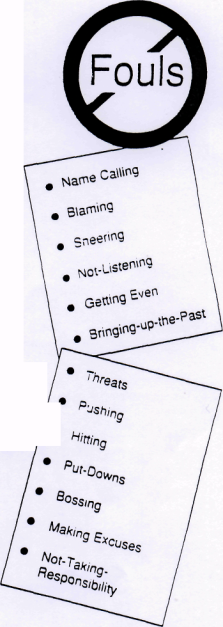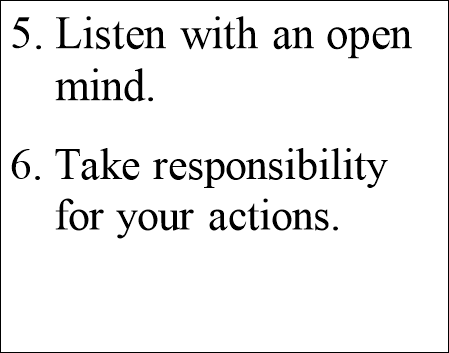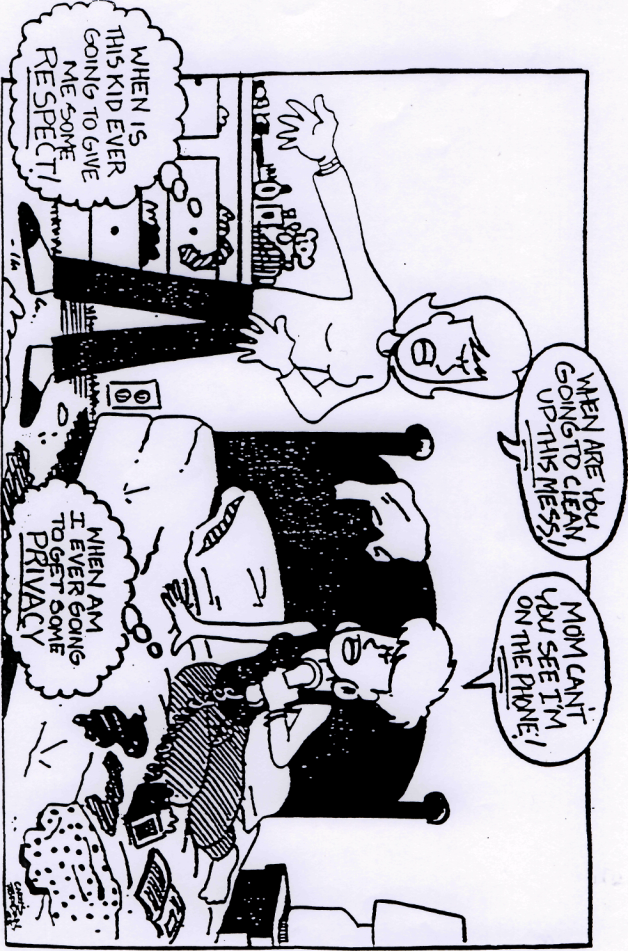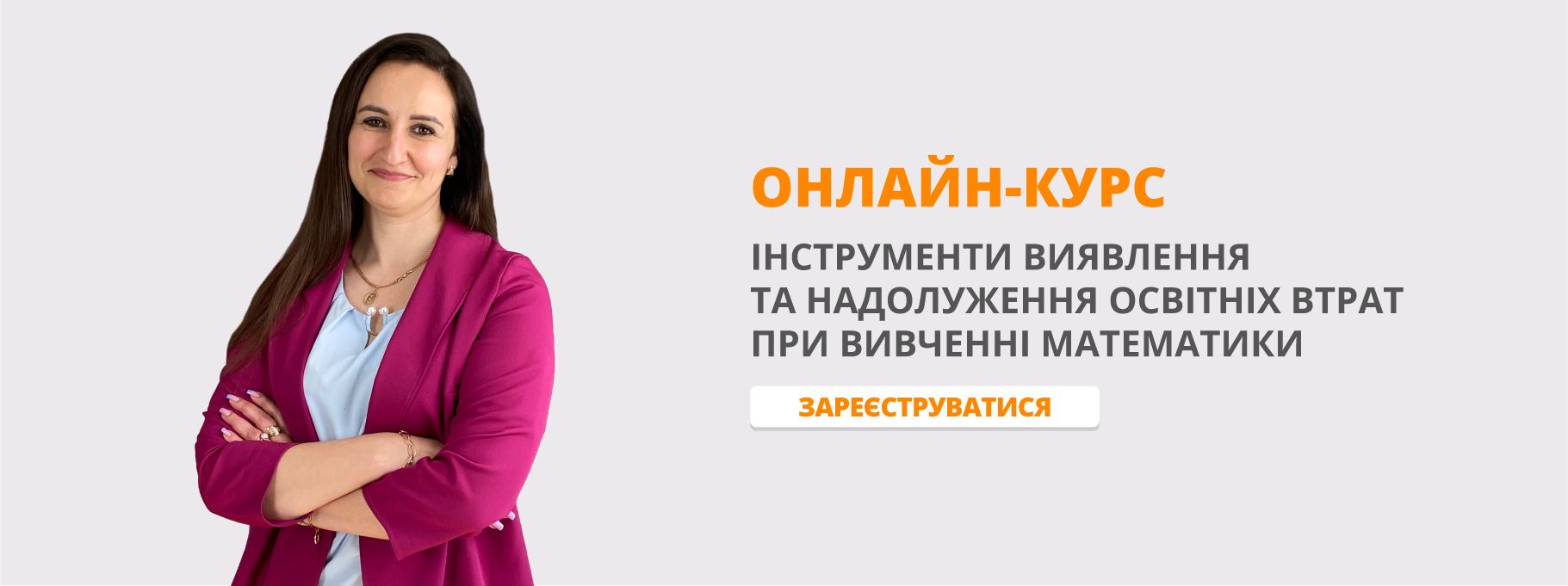Тема "Вирішення конфліктів" на уроках англійської мови
|
Автор Коломаров Володимир Ілліч
Посада вчитель англійської мови
Місце роботи Вільногірська загальноосвітня школа І – ІІІ ступенів №4
Назва роботи Тема «Рішення конфліктів» на уроках англійської мови.
Обсяг роботи 23 сторінки
Анотація В роботі показано важливість розвитку навичок рішення конфліктних ситуацій як однієї з форм комунікативної спрямованості навчання та громадянсько освіти. Робота містить методичні поради, ресурсні матеріали і вправи.
|
„…Завдяки взаєморозумінню, через гнучкість мислення та вміння вести переговори, діти вчаться вирішувати проблеми позитивно і без насильства. Але головним завданням, що стоїть перед освітою і усіма нами є задача відповідності тому, що ми викладаємо. Приклад, котрий ми надаємо дітям більше говорить їм про наші дійсні почуття та переживання, ніж слова…“
Йогеш Ганді, засновник
міжнародного Фонду Ганді
- Місце і зміст теми Рішення конфліктів у викладанні англійської мови у середній школі.
Методика вирішення конфлікті знаходить все більше використання у галузі державної та ділової діяльності останнім часом. В наданому сенсі ми розуміємо широкий спектр вмінь та навичок, що направлені на таке врегулювання конфліктних ситуацій, при якому викривається та використовується позитивний потенціал, який утримується в ньому. Надані вміння та навички розроблені для забезпечення справедливого вирішення конфлікту та дотримуючись інтересів усіх сторін, втягнутих у конфлікт: вони включають в себе головним чином наступні методи вирішення конфліктних ситуацій:
- спільне вирішення проблемної задачі;
- перемовини;
- групові обговорення;
- арбітраж;
- посередництво.
Ідея мирного, спільного вирішення проблем при виникненні конфліктної ситуації розглядається як необхідна умова для цілісної життєдіяльності як окремої особи, так і любих об'єднань: від невеликих груп до всього людства в цілому.
Якщо говорити про середню школу, то ми можемо визначити головні сфери використання методу вирішення конфліктів:
- дисципліна (наприклад, управління класом і таке інше);
- учбовий план (включення в план середньої школи вивчення методу РКС – Рішення Конфліктних Ситуацій);
- педагогічні технології (кооперативне навчання);
- культура (норми спілкування в школі і т.д.)
Ми тільки починаємо розглядати методику вирішення конфліктів як основу для змін у середній школі, змін, що впливають на основи її життєдіяльності: взаємовідносин вчителів та учнів, вміння вирішувати конфліктні ситуації, якими так багате наше повсякденне життя, перехід до концепції безконфліктної школи.
В даній розробці узагальнено мій досвід перебування у США в університеті штату Делавер. Я прослухав авторський курс по методиці вирішення конфліктів викладача університету Кетлін Уайен. Вважаю, що даний матеріал може успішно використовуватися на уроках англійської мови у старших класах, а окремі аспекти й на середній ступені. Наданий матеріал включає в себе повну розробку теми вирішення конфліктів з ресурсними матеріалами і наближеними уроками. Хотілося б відмітити великий потенціал даної теми для творчості вчителя, оскільки вона впливає на безпосередній психологічний аспект викладання іноземних мов, до того ж навчаючи своїх учнів вмінню вирішувати конфліктні ситуації ви вирішуєте найважливіші завдання виховання особистості і громадянина: вміння жити в суспільстві і позитивно впливати на нього.
Perceptions of Conflict
Conflict is …
…what happens when people disagree
…a perceived divergence of interests
… an opportunity for positive change
Personal Style Assessment
“Pick a Style… Any Style” Conflict Game
Directions:
- Gather into groups of 4-6 students. Get a deck of conflict style cards from the teacher. Decide which two students will play the first round. Placing the cards face down, have each of the two players choose a card. Do not let anyone else see your card. Using the first conflict scenario below, act out the conflict using the style written on your card. Limit your time to 2-3 minutes per conflict and pair. ( Where necessary, chose beforehand who will play which role.)
- Have the observers guess which style each member of the pair was using. Discuss briefly how it felt to play that style and to play opposite the other’s style. What clues did the observers use to guess the styles. Switch players and chose new cards and a new conflict.
Conflict Scenarios
- Two people trying to decide who will get to ride in the front passenger seat of the car on a long trip.
- Two people who both sign-up to bring “a cake” to the class party. There was not supposed to be duplication.
- Two students who both need the dictionary during the lesson.
- Two people in a discussion about music preferring different styles.
- Parent – children conflict situation.
- Teacher – student conflict situation.
Personal Style Assessment
High Importance





Low Importance Goals High Importance
Active Listening Techniques (handout)
Statements that help the other person talk.
Statement Purpose
To do this...
Examples
Encouraging 1- To convey interest
2. To encourage the other person to keep talking
... don't agree or
disagree
... use neutral words ... use varying voice
intonations
1. "Can you tell me more... ?"
2.
Clarifying !• To help you clarify what is
said
- To get more information
-
To help the speaker see other
points of view
. ask questions . Restate wrong interpretation to force the speaker to explain further
1. "When did this
happen?" 2.
|
Restating |
1. |
To show you are listening and |
...restate basic |
1. "So you would like |
|
|
|
understanding what is being |
ideas and |
your parents to |
|
|
|
said |
facts |
trust you more, is |
|
|
2. |
To check your meaning and |
|
that right?" |
|
|
|
interpretation |
|
2. |
|
Reflecting |
1. |
To show that you understand |
...reflect the |
1 . "You seem very |
|
|
|
how the person feels |
speaker's basic |
upset." |
|
|
2. |
To help the person evaluate |
feelings |
2. |
|
|
|
his or her own feelings after |
|
|
|
|
|
hearing them expressed by |
|
|
|
|
|
someone else |
|
|
|
Summarizing |
l. |
To review progress |
...restate major ideas |
1. "These seem to be |
|
|
2. |
To pull together important |
expressed including |
the key ideas |
|
|
|
ideas and facts |
feelings |
you've |
|
|
3. |
To establish a basis for |
|
expressed..." |
|
|
|
further discussion |
- |
2. |
Validating 1. To acknowledge the … acknowledge the
worthiness of the other value of their issues
person and feelings 1. ."I appreciate your
...show appreciation willingness to resolve
this matter."
for their efforts and 2.
actions
FIVE BASIC STYLES IN CONFLICT SITUATIONS
COMPETITION: I satisfy my concerns at your expense. [Win/Lose]
ACCOMMODATING: I satisfy your concerns at my expense. [Lose/Win]
AVOIDANCE: Neither you nor I satisfy our concerns.
[Lose/Lose]
COMPROMISE: I give up some of my concerns to satisfy
[No Win/ you and you give up some of your
No Lose] concerns to satisfy me.
COLLABORATION: We discover new and creative ways to [Cooperation] satisfy both of our important concerns. [Win/Win]
Personal Style Assessment
Compromise is giving up something in order to get something. It is an attempt to seek middle ground.
Advantages:
Disadvantages:
Collaboration is working together in order to satisfy the needs of both people. It involves problem solving and assumes that both people can get their needs met. One party does not have to win at the other's expense. It is win-win problem-solving.
Advantages: Disadvantages:
Which style do you most frequently use in a conflict with the following people?
-Spouse -Parent
-Child -Sibling
-Co-worker -Friend
-Boss
Rules For Fighting Fair
1. Identify the problem.
4. Treat a person's
feelings with respect.

3. Attack the problem, not the person.
2. Focus on the problem.

I-Messages
I-MESSAGES DO:
- focus on the present conflict
- describe
a. how you feel
b. when something happens
c. why you feel that way
— use a feeling word
- describe your needs
-
speak about yourself
I MESSAGES DO NOT: - blame or attack
— criticize
~ name call
- bring up past grievances
- assume the other party knows how you feel
- accuse
Active Listening
ACTIVE LISTENING
-- a way to find-out if you correctly understand the other person's point of view
Active Listening is ...
-- trying to understand -- respecting
-- tuning into their feelings -- nodding
-- paraphrasing -- acknowledging
-- elaborating -- respecting
-- clarifying -- showing interest
Active Listening is not...
-- interrupting -- persuading
-- defending -- moralizing
-- denying -- looking away
-- advising -- looking bored
-- comforting -- asking questions
Active Listening
FEELINGS VOCABULARY
For improving communication about and understanding of the myriad emotions people experience.
happy, glad
joyful
hopeful
excited
cheerful
funny
silly
wacky
weird
wild
proud
conceited
superior
smart
brilliant
miserable
sad
regretful
depressed
disappointed
heartbroken
like crying
curious
confused
all mixed up
puzzled
suspicious
paranoid
timid
shy
bashful
embarrassed
self-conscious
angry, mad
upset
irritated
disgusted
frustrated
peeved
surprised
shocked
amazed
victimized
taken advantage of
dumped on
used
abused
unappreciated
tense
anxious
worried
afraid, frightened
nervous
peaceful quiet calm brave
needy jealous
empty envious
unloved greedy
lonely
Active Listening
Listening For Feelings
- I just don't understand you.
-
I would really like to talk with her about that, but I
can't. -
I guess I was rather rude to him and I shouldn't have
been. - I never seem to live up to your expectations.
- That presentation was a waste of time.
- I really enjoyed working with this group.
- I cannot believe my proposal was rejected.
-
That report better be on my desk by 8:00 a.m.
tomorrow morning or heads are going to roll. -
No one ever thinks to invite me out to lunch with their
group. -
I can't fax this football pool for you. If I get caught
using the fax machine for personal use, I know I'll be in
hot water. -
No matter what the group says, I am going to stand up
for what I believe is right.
•
12. My office staff is extremely dedicated and responsible.
Active Listening
Active Listening Starters
There are a variety of ways to start an active listening response - ways that don't sound stilted or repetitive. The underlined word (feeling) should be changed to fit the message you hear. Pay attention to words as well as body language.
I see, you had hoped that I would ...
That sounds to me like you're upset that...
You seem excited about...
I guess you want/wish/feel...
You mean you're frustrated because...
You look worried about...
I'm not sure I understand. Do you mean that you're disappointed about...
You hate that because...
I think I understand. You're saying that you wish ...
You're confused. You're confused because...
You feel mistreated when...
This whole thing is overwhelming to you because...
You're afraid that...
Remember, good active listening is as much about what your body is doing, as it is about what your mouth is saying!!
Active Listening
ACTIVE LISTENING WORKSHEET
STEP #1: Questions for discussion after each person listens: Questions for the person who was talking —
A. What did the listener do that made you feel
comfortable and kept you talking?
B. Is there anything the listener could have done
differently?
C. Was it easy or hard to be the one talking?
D. In a conversation what can you do to help
someone listen to you?
Questions for the listener —
A. Was listening easy or hard and why?
B. What was the most difficult part of active
listening?
C. Given the feedback you just got from the person in
your group, is there anything you can do to be a
better listener?
Step #2: After both people have been listeners discuss these questions:
A. What do you do well as a listener?
B. What could you work on to improve your listening
skills?
I-Mess ages
A SIMPLE FORMULA FOR I-MESSAGES
I messages are a clear, assertive and non-threatening way of telling another person: a) how you feel; b) when something happens; and c) why.
A. I FEEL...
State how you feel.
B. WHEN…
State the problem.
C. BECAUSE...
State why.
EXAMPLE
A. I FEEL … frustrated
B. WHEN… you talk while I’m talking
C. BECAUSE… what I’m saying is
important and I need to be
certain that you heard it.
Personal Style Assessment
![]()
![]()
![]() STYLES OF CONFLICT MANAGEMENT
STYLES OF CONFLICT MANAGEMENT
![]() It's not whether you have conflict in your life, but how you deal with the conflict, that makes a difference.
It's not whether you have conflict in your life, but how you deal with the conflict, that makes a difference.
People respond to conflict in different ways. We often use different styles in different situations.
Avoidance means that a person knows there is a conflict but chooses not to deal with it. An avoider walks away from the problem and may avoid the person with whom he or she is having the conflict.
Advantages: Disadvantages:
Accommodation is putting aside one's own needs and concerns in order to satisfy the needs of the other person.
Advantages: Disadvantages:
Competition is trying to win or make the other person lose by giving in. In this style, a person defends his/her position or pursues his/her own goals without regard for the needs of the other person. This style assumes that in order for one person to win, the other person
must lose.
Advantages: Disadvantages:
REFOCUSING ATTENTION
Moving beyond positions [wants] to interests [needs].
POSITION:
Your position is something you have decided upon. It is what you say you want. It represents one possible solution; one that satisfies you.
INTEREST:
Your interests are what cause you to decide on your position. It is what motivates you. It represents your values and your underlying needs.
8O%
^
Why do you want what you want?
What will you have if you get your position?
What is motivating you?

 Position
Position
[Symptom]
Interests
[Cause]

Reference resources:
- New Mexico Center for Dispute Resolution, 1992, 2006
-
Office of Collaboration & Conflict Resolution, College of Education,
University of Delaware, 1995
- Dr. Martha Harty, Carnegie Mellon University, Pittsburgh, PA, 1996, 2001
Introduction to Conflict Resolution
Contents of Manual
- Introductions
- Perceptions of Conflict
- Conflict Styles
- Point of View
- Overview of the Conflict Resolution Process
- Active Listening
- I-Messages
- Reframing the problem in terms of interests
- Brainstorming solutions
- Getting Agreement
- Closure
- Evaluation


про публікацію авторської розробки
Додати розробку
